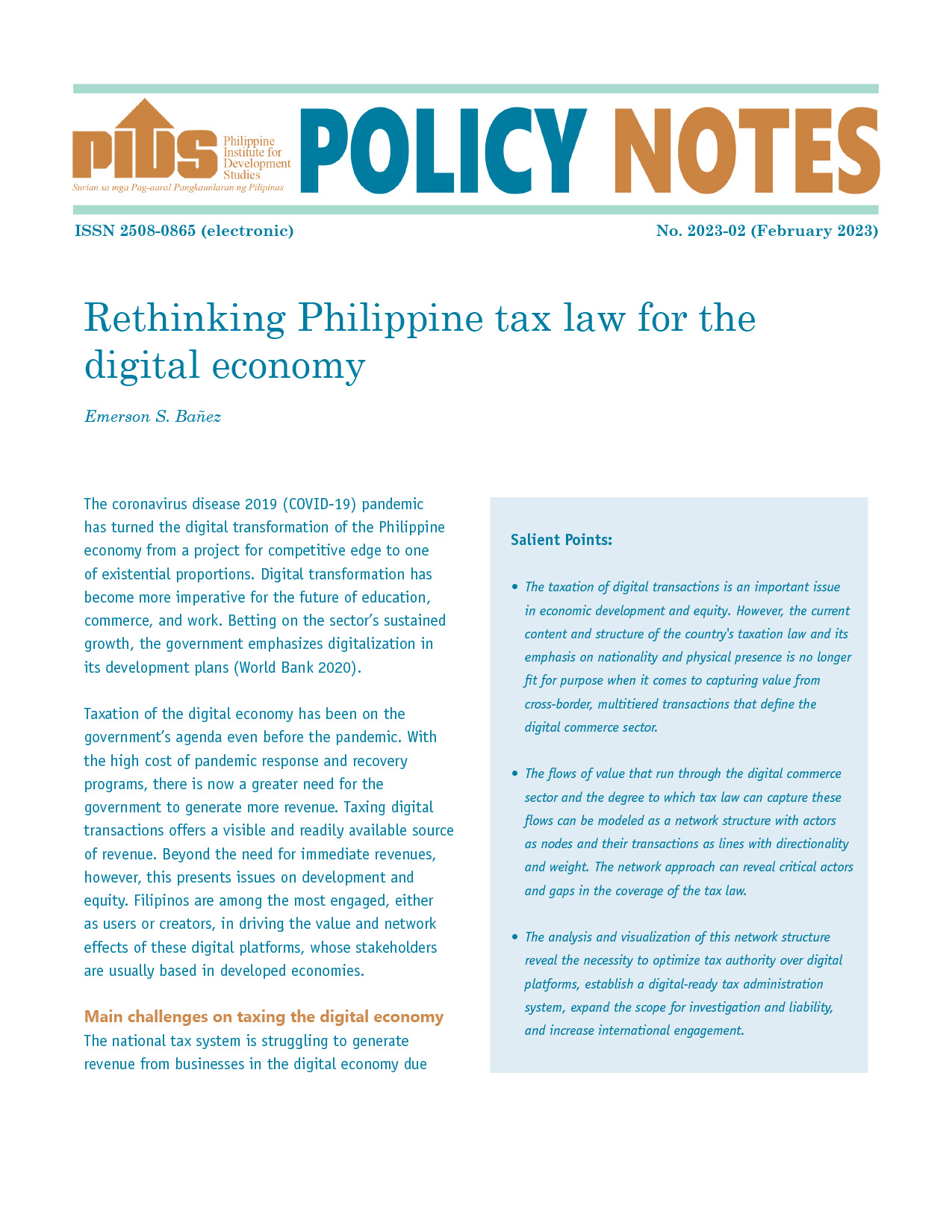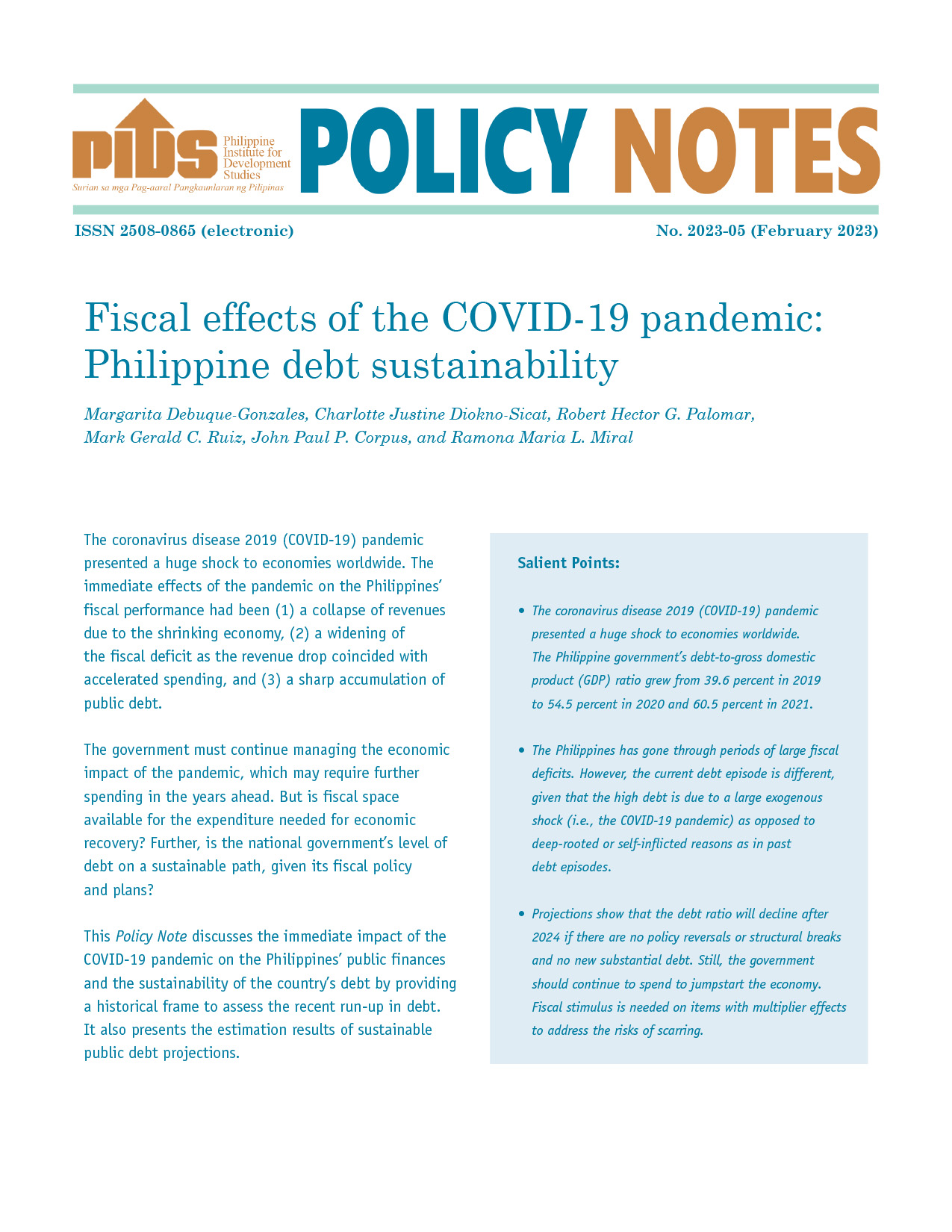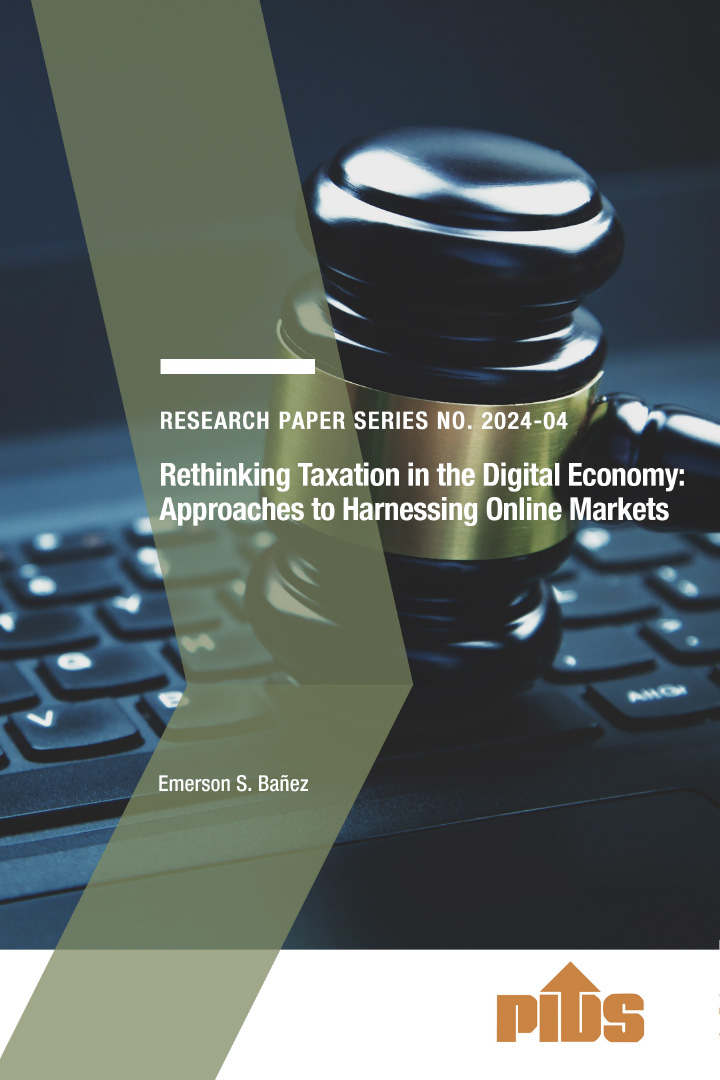In a two-part column last year, I listed the 10 Must Do’s for the next administration in its first 365 days in office (https://bit.ly/Bernardo365-01 and https://bit.ly/Bernardo365-02). A collective work with inputs from economists and subject matter experts from the Foundation for Economic Freedom (FEF), the Management Association of the Philippines (MAP), and Makati Business Club (MBC), we cast a wide net, covering health, education, energy security, public-private partnership (PPP) revival, labor policy, ease of doing business, and rule of law.
What was not elaborated in that list is the subject matter of this column: the fiscal/ financial component of the plan, “Develop and signal to financial markets a medium-term fiscal consolidation plan.”
The current economic team led by Finance Secretary Carlos “Sonny” Dominguez is bequeathing to their successors a fairly healthy fiscal position, especially robust if one considers the ravages the pandemic has wrought: required massive spending on one hand, and a decimated revenue base on the other. This led to our public debt-to-GDP to rise from the pre-pandemic 40%, to now in excess of 60% — the pre-pandemic norm before credit watchers flash yellow lights — and a current budget deficit to GDP that ballooned to 7%, twice the normal that is deemed sustainable.
The Philippines is far from being unique in this. Emerging market countries are confronted with the same pandemic history, plus new strong headwinds: potential COVID resurgence, the impact of the Russian invasion of Ukraine on energy and food prices, slowing global economic growth with the possibility of stagflation, the US Fed’s progressive tightening of monetary policy after a decade long expansion, the resulting financial shocks and end of cheap credit this will bring. Not to mention lingering and scarring effects of COVID on micro-, small- and medium-sized enterprises (MSMEs), certain sectors like tourism, labor mismatches, and the damage to education/training.
What potentially differentiates the Philippines is a strong starting position pre-COVID. Thanks to fiscal reforms done over successive administrations, especially the tax reforms done under TRAIN (Tax Reform for Acceleration and Inclusion Law), we have cushions that mitigate the risks. Buffers in the external accounts side, a robust international foreign exchange reserve position which at over twice what the IMF has assessed to be adequate, made credit rating agencies maintain our current investment grade rating, even as many EMCs have been downgraded.
Does this mean we can relax and behave like it’s “business as usual”? No, far from it.
These fearful headwinds will adversely impact us all, especially the poor and more vulnerable. It made the business community, and the larger public, loudly applaud President-elect Ferdinand Marcos, Jr.’s choice of his core economic team — Bangko Sentral ng Pilipinas (BSP) Governor Benjamin Diokno for Finance Secretary, Monetary Board Member Felipe Medalla for BSP Governor, Arsenio Balisacan for National Economic and Development Authority Secretary (NEDA), Alfredo Pascual for Department of Trade and Industry Secretary, and Bangko Sentral ng Pilipinas (BSP) Assistant Governor Amenah Pangandaman for Budget and Management Secretary— highly respected professionals who are knowledgeable, experienced, and who can hit the ground running. I dare say, anyone would be hard pressed to name a better team.
It’s also recognition of these challenges, and a noble intent to help the next team that may have prompted Mr. Dominguez, NEDA’s Karl Kendrick Chua and company to put forward recommendations for a well spelt out fiscal consolidation program for the next administration. (See the link on proposed program at https://bit.ly/FiscalPlan2022)
Among others it advocates some tweaking in the VAT to further plug leakages (like regressive and abused seniors and PWD discounts), deferment in the TRAIN personal income tax reduction, VAT on digital service providers, excise taxes on motorcycle, repeal of immediate expending of input VAT on capital goods.
The reaction of incoming Finance Secretary Diokno to these is also understandable: while appreciating the initiative, they would rather not comment on the specific measures being proposed at this time, especially the more painful and thus contentious ones. (Though they are rightly already trying to walk back some of the more extravagant promises like P20 per kilo rice and oil price re-regulation.)
Doubtless, the Marcos Jr. administration will in due course unveil a fully articulated program for the entire economy, not just on the fiscal front: one that balances the need for spending and investment to nurture the emergent recovery, protect the most vulnerable especially from the food inflation that is already upon us, and lay the foundations for future robust investment led growth, while taking the needed steps to bring down the debt ratios necessary for macro stability and continued access to financing at affordable terms.
An excellent paper co-authored by Philippines Institute for Development Studies’ Drs. Margarita Debuque-Gonzales, Charlotte Justine Diokno-Sicat et al, “The Fiscal Effects of the COVID Pandemic: Assessing Public Debt Sustainability in the Philippines” should help guide them. (https://bit.ly/PIDS_FiscalEffects)
This outstanding contribution covers all the aspects of the fiscal impact of COVID past and prospective, some of the looming risks from macro-financial shocks, and already visible “grey rhinos” like the Mandanas ruling and the snowballing unfunded pension debt of the uniformed personnel. I highly recommend it not just to policy makers in both the executive and legislative departments, but also to private sector analysts, and academics keen to understand debt sustainability dynamics, and what constraints face our collective quest for development.
The key conclusion of Gonzales, Sicat et al.: “Results suggest that the country’s debt position today is less worrisome than it had been during previous debt crises, and that the debt-to-GDP ratio will remain manageable despite peaking above 65% over the next couple of years. Given the need to spend to prevent possible scarring from the pandemic and give the economy time as well as room to recover from the pandemic crisis, it may not be feasible to immediately return to pre-COVID-19 debt ratios, based on fiscal gap computations. This underscores the need for a sound medium- to long-term fiscal consolidation plan to anchor sentiments… This presupposes however the absence of major fiscal policy reversals, especially of hard-won fiscal reforms since the mid-1980s.”
I highlight two key variables in the report that will define future debt sustainability: a.) the rate at which the economy grows, and, b.) the rate at which they can reduce the deficit to GDP. For example, if the aim is to bring it down back to 40% in 10 years, GDP will need to grow at 7% annually plus deficit reduction of two percentage points of GDP per year. Far from being an easy task given the global headwinds described earlier.
Our own Global Source forecast for the medium-term growth is that this will be scaled down to 5-6% (from 6-7% over the last decade pre-pandemic) because total factor productivity had been slowing even before the pandemic, the worrisome scarring effects in education, potential labor mismatches, and end of decade-long cheap capital globally.
A potential game changer that can raise our medium-term growth rate back to 6-7%: if the Marcos Jr. administration is able to build upon the reforms lately passed that opens up the economy to more foreign direct investments (Public Service Act Amendment Law, Retail Trade Law, and Foreign Investment Law). And is able to sustain the 5% infrastructure spending to GDP annually initiated by the current one under the Build, Build, Build program that was interrupted by the pandemic.
This time around, government will need to depend on more private sector investments under PPP (public-private partnerships) due to constrained fiscal space, a subject covered by my esteemed Introspective co-columnist Dr. Raul Fabella (“Rule of Law, Credible Commitment and Investment under President Marcos” (https://bit.ly/Fabella060622) and my earlier columns “PPP: partnerships towards a progressive Philippines” (a two-part column, https://bit.ly/Bernardo_PPP).
In this regard, allow me to end by quoting TINA: “There Is No Alternative.”






